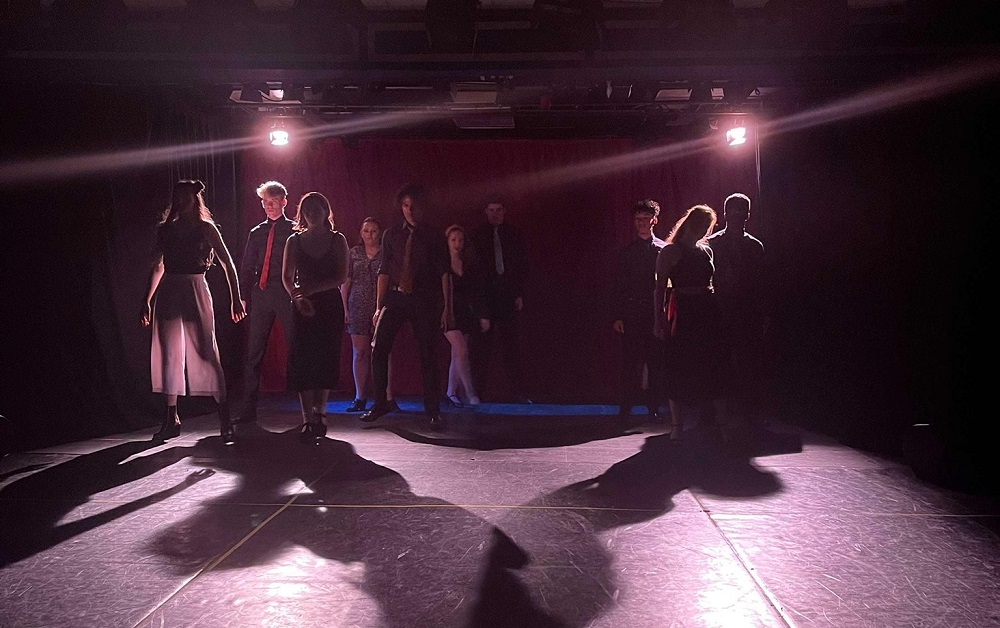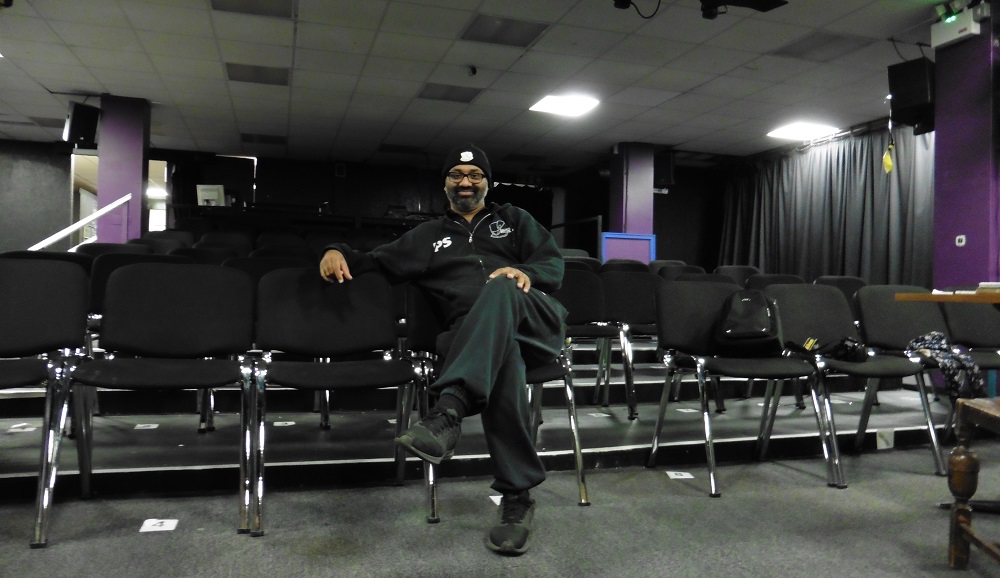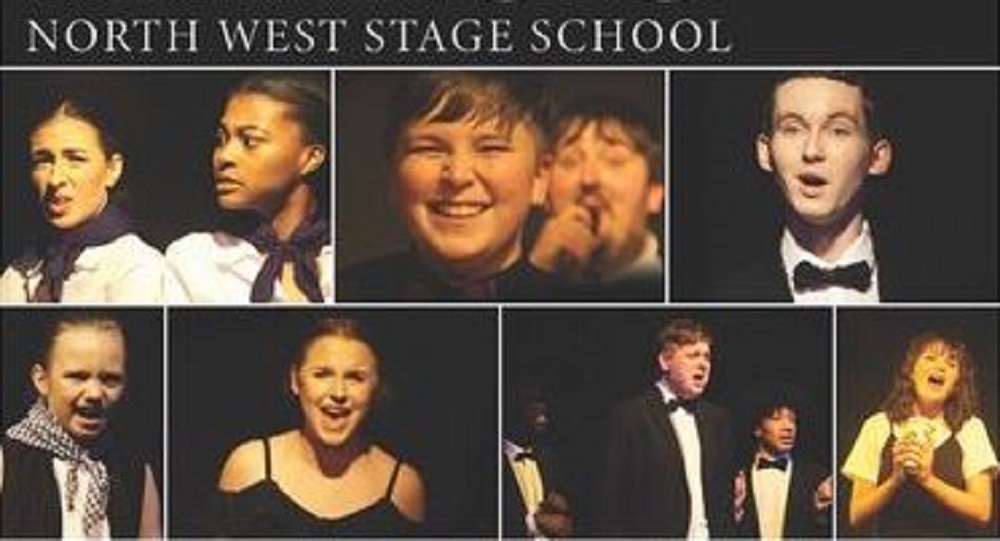
The new season at North West Theatre Arts Company, Lightbowne Rd, Moston is under way and what a great start!
Phantom Memories is set in a disused theatre that four youngsters find their way into. Dusty props, odd items of costume and pieces of faded scenery present a creepy, haunted atmosphere. They’re caught red handed by the ageing caretaker, Bud Berger, superbly played by the young Harry Gardner. They run off leaving one young lady behind.
Finding herself alone she curiously starts to sort through the dusty objects. Each one she touches conjures us up ghostly images taking her, and the audience, back in time as they perform their memories from past musicals.

NWTAC’s theatre school term started just 4 weeks ago and the cast represents the full range of students including the newest members and the most experienced. A month is not a lot of rehearsal time so it was ‘in at the deep end’ for the newbies. They did so well. Early nerves soon dissipated and everyone grew in confidence as the show unfolded.
The musical numbers showcased a variety of West End productions, big box office films and the best of Hollywood hits such as Jesus Christ Superstar, Grease, The Sound of Music, The King and I, Evita, South Pacific, The Wizard of Oz, Half a Sixpence and more. Something to suit everyone.
The full company kicked off with The Phantom of the Opera, closing the show two hours later with Born to Hand Jive and You’ll Never Walk Alone. In between we had solos, duets, comedy pieces and one or two cheeky numbers too.
Somewhere Over the Rainbow is one of my all-time favourites. It’s just ‘up there’ and Amelia Zatorska sang it so sweetly that I and the rest of the audience melted. Gareth Maudsley’s rendition of Flash! Bang! Wallop! was brilliantly energetic and I’m convinced he’s related to Tommy Steele. If You’ve Got It, Flaunt It by Maria Collins was soooo tongue in cheek it made us blush. James Llewellyn Burke nailed all of his numbers including Gethsemene and Madame Guillotine with real passion, matched by Solomon Asante-Owusu and Lois Ormerod’s ‘crime of passion’ with We Both Reached For the Gun.
All these numbers would have fallen flat without the brilliant staging and direction of the production team. It’s easy to overlook the skills involved. Some of dance routines were complex yet executed with precision and that’s a tricky challenge for such a large cast, so, well done to Choreographer Katie Gough. A total of 39 musical numbers must have left Bethany Singh, Musical Director, feeling very proud and rightly so.
This was the first of a season of 8 shows that NWTAC will perform over the coming months and the script was inspired: A lovely trip down memory lane. What can beat a live performance, close to home and it doesn’t break the bank to go and watch?
If you have never been to NWTAC’s theatre and don’t know what to expect this is a view of the interior with the show’s Director, Prab Singh in the foreground…

NWTAC are truly a talented group of people but don’t take my word for it. Go and see for yourself. Winter Wonderland, a variety concert to get you in the mood for Christmas, comes up next from the 18th to 20th November. See you there.
Details of all forthcoming shows, how to join the mailing list and book tickets etc., can be found on NWTAC’s website here, along with details of the North West Stage School.
You can also follow them on Facebook, just click here.


